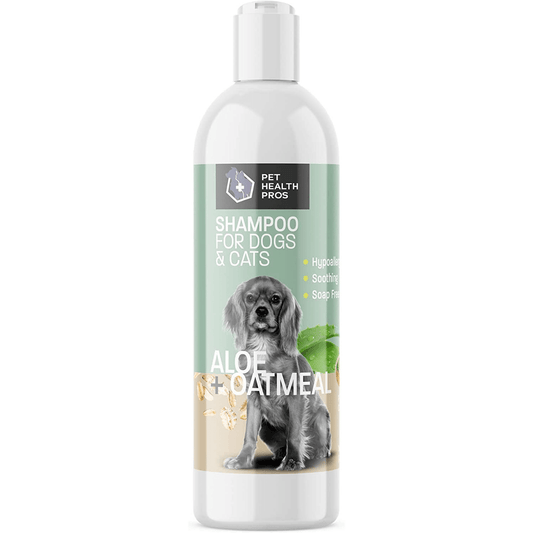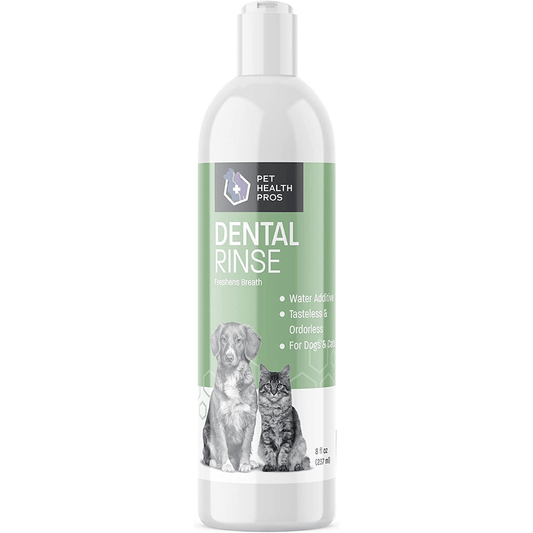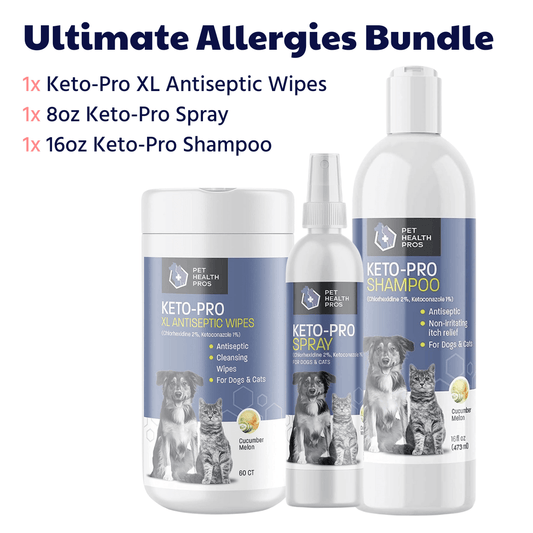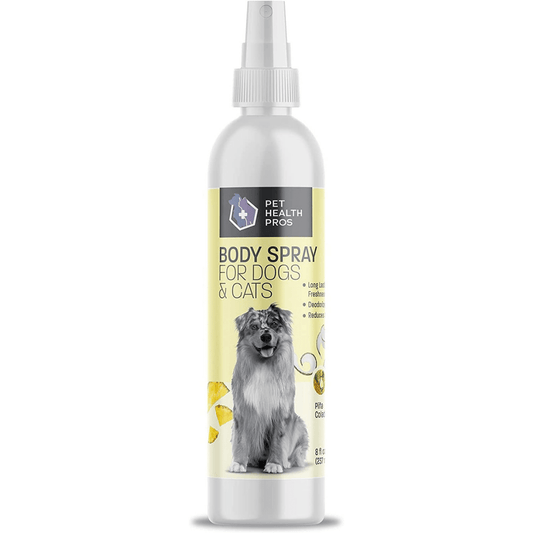Dog gingivitis is a common dental condition in dogs that causes inflammation and infection of the gums. It can lead to serious complications if left untreated. Fortunately, there are steps you can take to prevent and treat dog gingivitis. In this article, we will discuss the causes, signs, and symptoms of dog gingivitis, as well as effective prevention and treatment methods. Here are the key takeaways:
Key Takeaways
- Maintaining proper oral hygiene is crucial for preventing dog gingivitis.
- Choosing the right dog food can help promote good oral health.
- Regular veterinary check-ups are important for early detection and treatment of dog gingivitis.
- Professional dental cleaning is necessary to remove plaque and tartar buildup.
- There are home remedies and dental products available to help manage dog gingivitis.
Understanding Dog Gingivitis
What is Dog Gingivitis?
Dog gingivitis is a common dental condition that affects dogs of all ages. It is an inflammation of the gums caused by the buildup of plaque and tartar on the teeth. Gingivitis can lead to more serious dental problems if left untreated, such as periodontal disease and tooth loss. It is important to recognize the signs and symptoms of dog gingivitis and take steps to prevent and treat it.
Causes of Dog Gingivitis
Dog gingivitis is primarily caused by the buildup of plaque and tartar on the teeth and gumline. Plaque is a sticky film that forms on the teeth when bacteria combine with saliva and food particles. If not removed through regular brushing, plaque hardens and turns into tartar, which irritates the gums and leads to inflammation.
Other factors that can contribute to dog gingivitis include:
- Poor oral hygiene: Neglecting to brush your dog's teeth regularly allows plaque and tartar to accumulate, increasing the risk of gingivitis.
- Diet: Feeding your dog a diet high in carbohydrates and sugars can promote the growth of bacteria in the mouth, contributing to gingivitis.
- Age: Older dogs are more prone to developing gingivitis due to weakened immune systems and a longer exposure to plaque and tartar.
It is important to address the causes of dog gingivitis to prevent further oral health problems. Regular dental care, including brushing your dog's teeth and providing a balanced diet, can help maintain a healthy mouth and prevent the onset of gingivitis.
Signs and Symptoms of Dog Gingivitis
Dog gingivitis is a common dental condition that affects many dogs. It is important for dog owners to be aware of the signs and symptoms of dog gingivitis so that they can seek treatment for their furry friends. Some common signs of dog gingivitis include red and swollen gums, bad breath, bleeding gums, difficulty eating, and loose teeth. If you notice any of these symptoms in your dog, it is important to consult with a veterinarian as soon as possible.
Preventing Dog Gingivitis
Maintaining Proper Oral Hygiene
Maintaining proper oral hygiene is crucial for preventing dog gingivitis and promoting overall dental health. Regular brushing of your dog's teeth is the most effective way to remove plaque and prevent the buildup of tartar. Use a dog-specific toothbrush and toothpaste that is safe for dogs. Brushing should be done at least once a day, but ideally, it should be done after every meal. If your dog is resistant to brushing, you can try using dental wipes or dental sprays as an alternative.
In addition to brushing, providing your dog with appropriate chew toys can help keep their teeth clean. Chew toys that are specifically designed for dental health can help remove plaque and tartar while providing mental stimulation and entertainment for your dog. Look for chew toys that are made of durable materials and have textured surfaces.
Regular professional dental cleanings by a veterinarian are also important for maintaining your dog's oral hygiene. These cleanings involve a thorough examination of your dog's teeth and gums, removal of plaque and tartar, and polishing of the teeth. Your veterinarian may also recommend dental X-rays to assess the health of the tooth roots and jawbone.
Remember, prevention is key when it comes to dog gingivitis. By maintaining proper oral hygiene and seeking regular veterinary care, you can help keep your dog's teeth and gums healthy and prevent the development of gingivitis and other dental problems.
Choosing the Right Dog Food
When it comes to choosing the right dog food, it is important to consider your dog's specific needs and dietary requirements. Nutrition plays a crucial role in maintaining your dog's overall health, including their oral health. Here are some factors to keep in mind:
- Quality ingredients: Look for dog foods that contain high-quality ingredients, such as lean proteins, whole grains, and fruits and vegetables. Avoid foods that are high in fillers, artificial additives, and preservatives.
- Age and size: Different dogs have different nutritional needs based on their age and size. Puppies, adult dogs, and senior dogs require different levels of nutrients. Choose a dog food that is specifically formulated for your dog's life stage.
- Special dietary needs: Some dogs may have special dietary needs due to allergies, sensitivities, or medical conditions. Consult with your veterinarian to determine if your dog requires a specialized diet.
It is always a good idea to consult with your veterinarian before making any changes to your dog's diet. They can provide personalized recommendations based on your dog's specific needs and help you choose the right dog food for them.
Regular Veterinary Check-ups
Regular veterinary check-ups are essential for maintaining your dog's oral health. These visits play a crucial role in the early detection and management of dental issues, including gingivitis. During a check-up, the veterinarian will examine your dog's teeth and gums, looking for signs of inflammation, plaque buildup, and other dental problems. They may also perform a professional dental cleaning if necessary. Additionally, the veterinarian can provide guidance on maintaining proper oral hygiene at home, including brushing your dog's teeth and using dental products specifically designed for dogs.
Treating Dog Gingivitis
Professional Dental Cleaning
Professional dental cleaning is an essential part of maintaining your dog's oral health. While regular brushing and dental care at home are important, professional cleaning by a veterinarian is necessary to remove stubborn plaque and tartar buildup that cannot be effectively removed with a toothbrush.
During a professional dental cleaning, your veterinarian will thoroughly examine your dog's teeth and gums, looking for signs of gingivitis or other dental issues. They will then use specialized tools to remove plaque and tartar from both above and below the gumline. This process is known as scaling and root planing.
In addition to removing plaque and tartar, a professional dental cleaning also allows your veterinarian to identify any other dental problems that may be present, such as tooth decay or gum disease. Early detection and treatment of these issues can help prevent further complications and improve your dog's overall oral health.
After the cleaning, your veterinarian may also polish your dog's teeth to smooth out any rough surfaces and make it more difficult for plaque to adhere. They may also apply a dental sealant or fluoride treatment to further protect your dog's teeth.
It is recommended to schedule regular professional dental cleanings for your dog, typically once or twice a year, depending on their individual needs and oral health. Your veterinarian can provide guidance on the appropriate frequency for your dog.
Remember, professional dental cleaning is an important part of preventing and treating dog gingivitis, and it should be complemented with regular at-home dental care and veterinary check-ups.
Home Remedies for Dog Gingivitis
While professional dental cleaning is the most effective way to treat dog gingivitis, there are also some home remedies that can help alleviate the symptoms and promote oral health. Regular brushing of your dog's teeth is essential to remove plaque and prevent the buildup of tartar. Use a dog-specific toothbrush and toothpaste to gently brush your dog's teeth at least once a day. Additionally, you can incorporate dental chews or toys into your dog's routine to help remove plaque and massage the gums. Antiseptic rinses and water additives can also be used to reduce bacteria in the mouth and freshen your dog's breath.
Using Dental Products for Dogs
Using dental products specifically designed for dogs can be an effective way to maintain their oral health. These products are formulated to target the unique needs of dogs' teeth and gums, helping to prevent and treat dental issues such as gingivitis. Regular brushing with a dog-friendly toothpaste is one of the most important steps in maintaining good oral hygiene. It helps remove plaque and tartar buildup, which are major contributors to gingivitis. Additionally, dental chews can provide a supplemental cleaning action, helping to reduce plaque and freshen breath. It's important to choose dental products that are safe for dogs and approved by veterinarians.
To ensure top-quality oral care for your furry friends, you can explore our Dental Care category and choose the best products to maintain your pet's oral health.
Complications of Untreated Dog Gingivitis
Periodontal Disease
If left untreated, periodontal disease can develop as a complication of dog gingivitis. Periodontal disease is a more advanced stage of gum disease that affects the supporting structures of the teeth, including the gums, periodontal ligament, and alveolar bone. It occurs when the bacteria in plaque and tartar build-up cause inflammation and infection in the gums, leading to the destruction of the surrounding tissues.
Periodontal disease can have serious consequences for a dog's oral health. It can result in tooth loss, as the infection weakens the structures that hold the teeth in place. Additionally, the bacteria from the infected gums can enter the bloodstream and spread to other parts of the body, leading to systemic infections.
To prevent the complications of untreated dog gingivitis, it is essential to address the underlying gum disease and maintain proper oral hygiene. Regular veterinary check-ups, professional dental cleanings, and home remedies can help manage and treat dog gingivitis before it progresses to periodontal disease.
Tooth Loss
Tooth loss is one of the potential complications of untreated dog gingivitis. When the gums become inflamed and infected, it can lead to the destruction of the tissues that support the teeth. As a result, the teeth may become loose and eventually fall out. Tooth loss can significantly impact a dog's ability to eat and chew properly, leading to nutritional deficiencies and weight loss.
It is important to note that tooth loss is not only a cosmetic issue but also a health concern. Missing teeth can cause changes in the alignment of the remaining teeth, leading to bite problems and further oral health issues. Therefore, it is crucial to address dog gingivitis promptly to prevent tooth loss and maintain overall oral health.
To prevent tooth loss, it is essential to practice good oral hygiene for your dog, including regular brushing, using dental products recommended by your veterinarian, and scheduling professional dental cleanings as needed. Additionally, providing your dog with a balanced diet and regular veterinary check-ups can help identify and address any dental issues before they progress to tooth loss.
Remember, early intervention and proper dental care are key to preventing tooth loss and ensuring your dog's oral health and overall well-being.
Systemic Infections
Systemic infections are a serious complication of untreated dog gingivitis. When the bacteria in the mouth enter the bloodstream, they can spread to other parts of the body, leading to various health issues. These infections can affect vital organs such as the heart, liver, and kidneys, causing significant damage.
It is important to note that systemic infections can be life-threatening if left untreated. Therefore, it is crucial to address dog gingivitis promptly to prevent the development of these complications.
To reduce the risk of systemic infections, it is recommended to maintain proper oral hygiene for your dog. This includes regular brushing of their teeth with a dog-specific toothbrush and toothpaste. Additionally, providing dental chews or toys can help remove plaque and tartar buildup, reducing the chances of bacterial growth.
Remember, prevention is key when it comes to dog gingivitis and its associated complications. By taking proactive measures to maintain your dog's oral health, you can help ensure their overall well-being.
Untreated dog gingivitis can lead to serious complications for your pet. Gingivitis is an inflammation of the gums caused by plaque buildup. If left untreated, it can progress to periodontitis, a more severe form of gum disease. Periodontitis can cause tooth loss, bone damage, and even systemic infections. It's important to take action and seek treatment for your dog's gingivitis to prevent these complications. At Pet Health Pros, we offer a wide range of affordable pet health supplies, including dental care products to help prevent and treat gingivitis. Visit our website today to learn more and shop with confidence.
Conclusion
In conclusion, proper dental care is essential for treating and preventing dog gingivitis. Regular brushing, dental check-ups, and a balanced diet can help maintain your dog's oral health. It is important to be aware of the signs of gingivitis and take prompt action to prevent further complications. By following these preventive measures, you can ensure that your furry friend has a healthy and happy smile for years to come.
Frequently Asked Questions
Can dog gingivitis be cured?
Yes, dog gingivitis can be cured. With proper treatment and oral hygiene practices, the inflammation of the gums can be reduced and the gums can heal.
What are the signs of dog gingivitis?
Signs of dog gingivitis include red and swollen gums, bad breath, bleeding gums, difficulty eating, and loose teeth.
How is dog gingivitis diagnosed?
Dog gingivitis is diagnosed through a dental examination by a veterinarian. The vet will examine the dog's gums, teeth, and mouth for signs of inflammation and infection.
Can I prevent dog gingivitis by brushing my dog's teeth?
Yes, regular brushing of your dog's teeth is an important part of preventing dog gingivitis. It helps remove plaque and bacteria that can lead to gum disease.
What kind of toothpaste should I use for my dog?
It is recommended to use toothpaste specifically formulated for dogs. Human toothpaste can be harmful to dogs if ingested.
How often should I take my dog for a dental cleaning?
The frequency of dental cleanings for dogs depends on their individual needs and the recommendation of their veterinarian. In general, dogs may need a dental cleaning once or twice a year.









